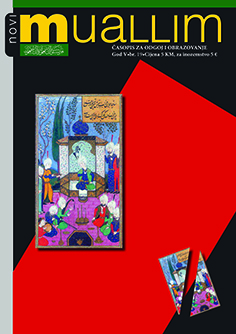THE CONTENT ANALYSIS METHOD AND ITS APPLICATION IN RELIGIOUS EDUCATION
DOI:
https://doi.org/10.26340/muallim.v5i19.1232Abstract
The author is not insisting on the detailed study of the text analysis method as his intention was only to point out to this easily applicable method, with excellent results in detecting opinions and orientations among the youth. Widely used in general, this method should occasionally be applied in religious education in both official schools and mosque schools (maktab). He further points out to the contraproductive conflicts between the process participants: parents, religious educators, school educators, scientists working with the youth. In order to succeed there should be a joint effort on the part of all the participants as well as the adoption of the unique plan, strategy and criteria in this complex process of helping the youth. This opens the issue of redefining the work of Islamic priests (imam) and Islamic educators (muallim).
Downloads
Published
How to Cite
Issue
Section
License
Naknada:
a. Časopis ne naplaćuje naknadu za obradu članaka (APC) i naknadu za podnošenje članaka.
Autori koji objavljuju u ovom časopisu pristaju na sljedeće uvijete:
- Autori zadržavaju autorska prava i pružaju časopisu pravo prvog objavljivanja, pri čemu će rad jednu godinu po objavljivanju biti podložan licenci Creative Commons imenovanje koja omogućuje drugima da dijele rad uz uvijet navođenja autorstva i izvornog objavljivanja u ovom časopisu.
- Autori mogu izraditi zasebne, ugovorne aranžmane za ne-ekskluzivnu distribuciju rada objavljenog u časopisu (npr. postavljanje u institucionalni repozitorij ili objavljivanje u knjizi), uz navođenje da je rad izvorno objavljen u ovom časopisu.


